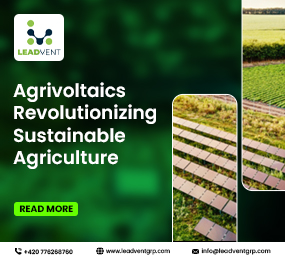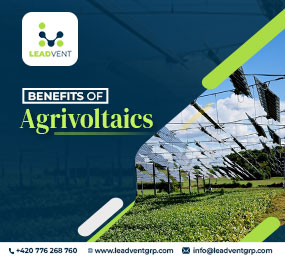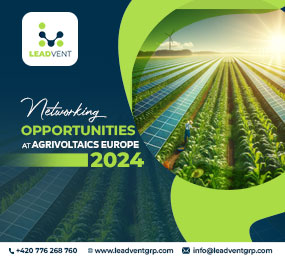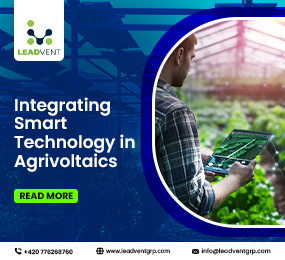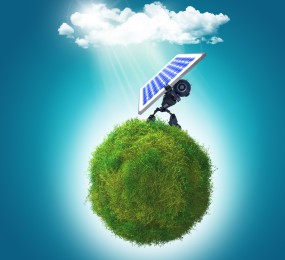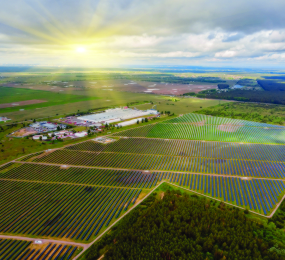In this era pervaded by the natural calamities, changes in climate, and scarcity of food items, the entire globe is in dire need of a promising solution that depicts the path. Amidst such a crisis period, the world needs a proven path that can ultimately address all the roots of the problems. Here AgriVoltaics emerges as the saviour to the entire human race that is waging war against the conventional ways that have their detrimental impact on nature. In this blog, we are going to dive into the sphere of AgriVoltaics to discover how it can contribute to the improved degree of food security while coping with the climatic changes.
What is AgriVoltaic farming?
In the field of farming, AgriVoltaics is a relatively new concept that amalgamates both solar power and agricultural methods to derive outputs from the same parcel of land. This process of farming in reality enhances the land efficiency and influences the process of renewable energy production.
This new approach to farming is largely accepted by industry leaders and experts to create win-win solutions. The 3rd Annual AgroVoltaics Europe 2024 event at present is offering a global platform to indulge the speakers and experts in a thought-provoking session of discussion for detailed analysis regarding this promising solution. Let’s shift to the next segment of this blog to explore more.
Why is AgriVoltaics rising in popularity?
As per statistical data, AgriVoltaics in 2024 is anticipated to reach 4.34 billion USD, and it clearly offers a glimpse of the emerging position of this new approach in the marketplace. The growing demand for solar energy by ousting the traditional energy derived from the fossil fuel is encouraging the farmers to rely on the potential of AgriVoltaic farming procedures to produce the improved quality of crops.
Like that of the European and Latin American countries, currently, the African countries are adopting the power of AgriVoltaics to reap the utmost profit out of them. The growing stress on sustainable measures and gradual development of an agro-based economy are the reasons behind the traction on the popularity of this alternative dual method of farming.
How Can AgriVoltaics Take Part in Addressing Food Security and Climate Change-related Challenges?
Agriculture since the inception of civilisation has remained an indispensable part of a thriving ecosystem. However, in recent times, the altering pattern of the weather and globalisation are intensifying the challenges for the farmers, who have their sole dependence on the land. Here are the ways through which AgriVoltaics can be the go-to solution for food scarcity and climate-change-related complications.
1) Enhancing the Rate of Nutrition- Retention
The agri-voltaic systems that are placed on a single parcel of land in reality take part in improving the quality of the soil through a higher degree of nutrition retention. In turn, the farmers are likely to get the most productive crops.
2) Reduction of the Pest Infestation
The placement of the agri-solar panel in the piece of land will aid in capturing the sunlight, and at the same time, a warm environment will be there in the land. This warmth will keep the pests away that usually get attracted to the humid weather.
3) Decreasing the Water Loss in Drought-Prone Areas
Solar panels in the land act as a barrier and offer shade to the crops, and it helps to reduce the amount of evaporation. This process in reality facilitates decreasing the water loss, especially in drought-prone areas.
4) Reduction of the GHG Emission
Producing clean and renewable energy out of the solar panels, AgriVoltaic takes part in cutting down the reliance on fossil fuel-induced energy that is detrimental for the environment as a whole.
5) Facilitating Seamless Water Conservation
Lastly, the reduction of the water evaporation takes part in conservation of the water resources, and at the same time, it keeps the chances of drought away.
Case Studies
French AgriVoltaic Project
The preponderance of AgriVoltaic farming all over the world has not only allowed the farmers to reap benefits but also intensified the complexities at the same time. Keeping in mind the limitations of this innovative approach to farming, the French government has passed new legislation. On the other hand, the French authority has taken the endeavour of mentioning the conditions that are conducive to the installation of the solar panels.
FAQs
1) How does agrivoltaics contribute to food security?
AgriVoltaics takes part in improving the productivity of the land and reducing food waste. In addition to that, it also reduces the water loss to prevent drought situations.
2) What are the economic benefits of AgriVoltaics for farmers?
From income diversification to whole-year harvests, high-quality crops enable the farmers to earn more and to ensure stable income.
3) How does AgriVoltaics help in mitigating the challenges related to climate change?
Prevention of the GHG emission to water conservation and most importantly protection of biodiversity, AgriVoltaic procedures cover it all to wage war against climate change.
Final Thoughts
AgriVoltaics in reality is a transformative solution, but it is not all applicable anywhere and under any circumstance. From diversification of the income sources to ensuring production all year long, this approach to farming is a weapon against food scarcity and climate change. To take part in the 3rd Annual AgriVoltaics Europe 2024 event, reach out to our Leadvent Group today.



